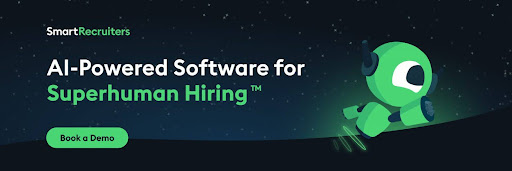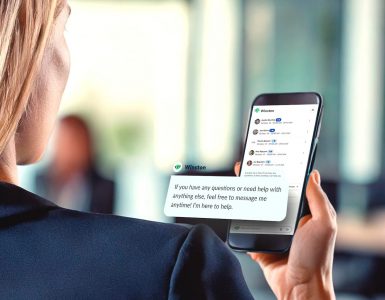In the age of AI, recruiting teams are under pressure to “do more with less”: less money and smaller teams. According to a Josh Bersin Company / AMS survey, 58% of respondents agreed that “Increasing the efficiency of our TA team and reducing cost” is a top priority for talent acquisition in the coming year. Using AI in recruitment is one way to unlock team efficiency and potentially lower costs—but it requires a thoughtful approach. Here are our tips on integrating AI into your recruitment workflows.
7 steps for setting up AI in recruitment
1. Prioritize the pain points to solve
Conduct an audit of your current recruitment practices. Are your teams struggling with a lack of candidates, candidate drop-offs, hiring team engagement, long hiring times, clunky onboarding, too much manual administrative work, or something else? Taking a holistic view of your TA processes will help you decide where AI can make the biggest impact.
Remember that AI is not always the solution to every problem; automation, more structured processes, or better recruitment marketing may solve the problem without the need for AI. In effect, you should be trying to determine how to hire more efficiently, not necessarily use AI.
2. Formalize experimentation
There are probably a few tech-centric people in your organization who love to play with new tools. Set up experimentation sessions at a regular cadence and document learnings.
Over time, you’ll be able to develop a plan for piloting new tools. By starting with manageable investments that offer measurable outcomes, you’ll pave a path toward wider impact.
The Recruiting Future podcast episode AI Powered Talent Acquisition offers an example of how one large organization created a formal experimentation process and developed a custom AI tool for hiring managers. Because there are no cookie-cutter solutions for AI in recruitment, it’s worth taking the time to determine the best path forward.
3. Define how to use generative AI
Generative AI is only one subset of the many types of AI recruitment tools that include chatbots, sourcing tools, assessments, and candidate matching.
Generative AI can assist with recruitment tasks such as job descriptions, communications, onboarding plans, interview summaries, employer brand content, etc. Remember that generative AI output requires editing because it sometimes hallucinates and doesn’t necessarily write in your company’s preferred voice and tone.
Experiment with the widely available generative AI tools such as ChatGPT, Microsoft Copilot, Google Gemini, Perplexity, and Claude. Be sure to review legal terms of use before exposing sensitive company information.
SmartRecruiters currently offers secure AI co-pilots for creating candidate scorecards and drafting candidate communications in SmartCRM.
4. Explore the vendor marketplace
The number of AI companies has exploded dramatically, and every vendor now claims they’re building AI products. It’s important to be discerning about the stability of the product and how the vendor uses your (and candidates’) information.
Take a look at your current vendors’ AI-based offerings and partnerships. For example, SmartRecruiters currently has over 30 vetted AI-based tools in the Partner Marketplace.
5. Get peer validation
Hearing a direct example of how a tool has transformed another company’s recruiting process is the best validation available. You can learn from peers by attending conferences, local networking groups, online events, and listening to podcasts. In this post, Ben Handyside, Director, Talent Acquisition, EMEA, outlined how he set up guardrails for the use of ChatGPT at Colliers.
When meeting in person, ask peers how it’s going, what they would have done differently, and what advice they have for someone just starting out.
After attending UNLEASH America, Allyn Bailey, Senior Director, Customer Marketing at SmartRecruiters wrote,
An openness to share and collaborate is shaping a robust community, where the fear of revealing too much is overshadowed by the urgency to find collective solutions to shared problems.
6. Partner with the legal team
In the United States, perceived hiring bias can result in a lawsuit. The EEOC prohibits any hiring practices that result in discrimination. The hiring decision is the most important step in the process that should not be made by AI due to bias risk. Keith Sonderling, the current EEOC Commissioner, spoke at length about the use of AI in recruitment and its potential for bias in this fascinating episode of the Recruiting Future podcast.
- A Korn Ferry survey revealed that 73% of leaders said they’ll keep a close eye on their tech for signs of security issues or algorithmic bias.
TA teams should partner with legal teams and look to hiring laws in their jurisdiction to determine if an AI tool could put them at risk. For example, New York City has a law that requires an audit of automated employment decision tools. The AI-based matching tool SmartAssistant has been audited (and passed) many times.
Ask vendors how they approach compliance and keep up with evolving legislation to ensure that any AI-based tools you invest in will remain compliant.
7. Optimize for human impact
It’s important to keep in mind that your company needs to hire people who want to show up every day and collaborate with customers and colleagues. Too much technology can dehumanize the hiring process, leaving candidates feeling cold and unenthused about showing up to work.
- Deloitte research reveals that workers can perceive employers as much as 2.3 times less empathetic and human when AI tools are offered.
Look closely at each AI-driven process and ask how it helps candidates, hiring teams, and how it fits in with company values.
Humanizing hiring in the age of automation and AI
With a mission to humanize hiring in the age of automation, SmartRecruiters recommends a balanced approach to AI-driven technology. Lehua Stonebreaker, SVP, People at SmartRecruiters, said in HR Brew,
While technology streamlines many tasks and can enhance efficiency, an excessive dependence [on AI-based tools] could lead to unintended biases or overlook crucial nuances in human interactions.
If not properly monitored or refined, they might prolong or even worsen existing biases, impacting hiring, promotions, or performance evaluations. Additionally, they might compromise a company’s culture by reducing human interaction and undermining the display of empathy in the workplace.
Ultimately, AI should help your company hire more efficiently and deliver better insights. You can read more about the SmartRecruiters perspective in 6 Do’s and Don’ts for Using AI to Humanize Hiring, featuring Chief Product Officer and Acting CEO Rebecca Carr.
If you’re ready to explore an applicant tracking system with the same AI features that helped Frasers Group, an international retailer, hire more efficiently at scale, sign up for a demo today.






